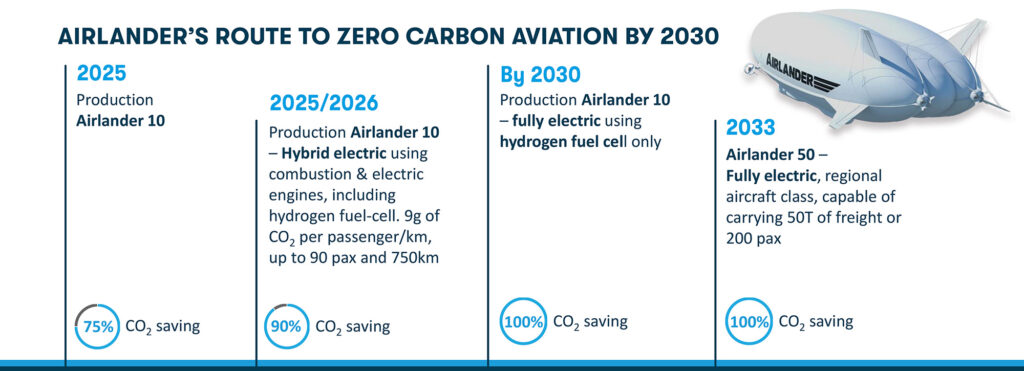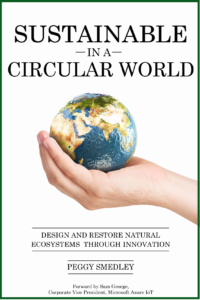Innovation requires support to effect execution. If the infrastructure isn’t available to support new transportation methods—electric or hydrogen-powered vehicles, for example—the ideas might stay on the shelf or in the parking lot. Given enough time, though, the support facilities can be ready by the time the innovation goes into production.
An innovative concept for green aviation is the fully electric aircraft. One example is the use of electric engines for propulsion and helium cells for lift—an electric airship instead of an electric airplane. The design of a hybrid aircraft, combining buoyant lift from helium with aerodynamic lift and vectored thrust, is one that British firm HAV (Hybrid Air Vehicles) has been developing. The design creates significant efficiency over conventional fixed and rotary wing aircraft.
Using the buoyant lift of helium reduces the fuel burn required just to keep the vehicle airborne – most of the airframe’s weight is countered by the helium’s buoyancy. In its current configuration, HAV’s Airlander 10 produces approximately 75% fewer emissions than comparable aircraft in similar roles.
Airlander’s helium-filled hull and low flight speed also make it a low-vibration and low-G aircraft, which improves reliability. The aircraft also has features that make it inherently safer than other aircraft. This is particularly true in comparison to helicopters, as Airlander is not reliant on any single engine.
AECOM, the infrastructure consulting firm, has partnered with HAV to provide infrastructure services for Airlander. The partnership will draw on AECOM’s consulting and advisory services for cost and carbon benchmarking, sustainability development, master planning, construction program management, and scheme delivery. This work will include advice on hydrogen supply infrastructure and transit interchange design.
The AECOM and Hybrid Air Vehicles memorandum of understanding sets out the basis and scope of a long-term infrastructure partnership. AECOM will provide end-to-end infrastructure partner services to facilitate the operation of the aircraft, which will deliver 90% fewer emissions than other aircraft when it enters service in 2026 and will run entirely on hydrogen by 2030 through fuel cell technology.

HAV and AECOM will work together with HAV’s customers to develop the infrastructure to operate Airlander, including preparing for hydrogen on site for the hybrid-electric and all-electric Airlander 10 aircraft. In addition, AECOM will work with HAV to develop the Airlander 10 manufacturing facility. Additional joint work on the larger Airlander 50 and other projects is expected.
The work with Hybrid Air Vehicles to develop infrastructure will enable the transition to net zero aviation. Through AECOM’s Sustainable Legacies strategy, the company is committed to ambitious environmental, social, and governance targets. In practice this means advising and enabling clients to realize and implement innovative technology which will cut carbon emissions.
This partnership matches AECOM’s experience and vision for the future of infrastructure with an ambition to deliver decarbonized air services through the Airlander aircraft. Airlander operators will work to make zero emission flight for 100 passengers or ten tons of cargo a reality within the decade.
Want to tweet about this article? Use hashtags #construction #sustainability #futureofwork #infrastructure


